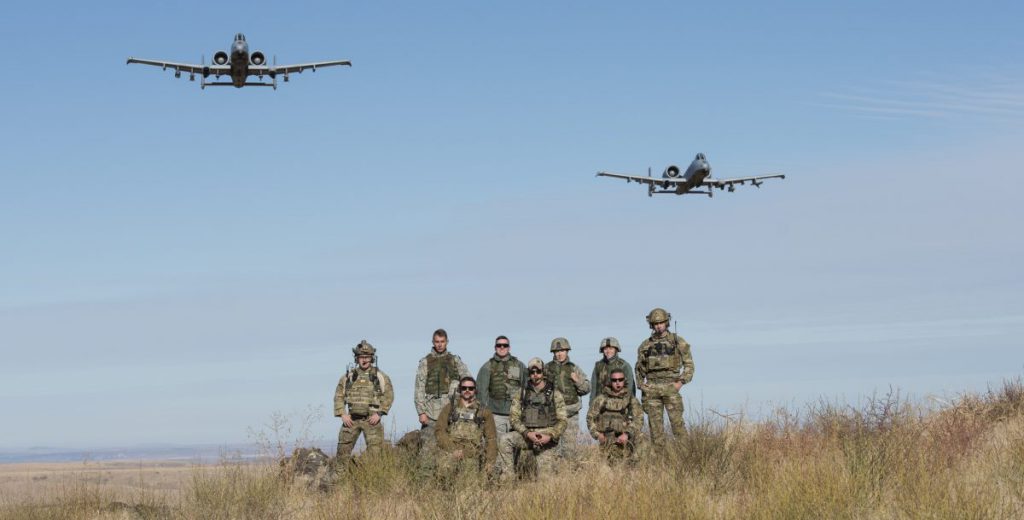Putting the pieces together: TACP share experiences with 124th Fighter Wing Airmen

Story by Airman 1st Class Taylor Walker
124th Fighter Wing
GOWEN FIELD, Idaho (October 5, 2019) – Airmen from the 124th Maintenance Squadron and 124th Medical Group joined Tactical Air Control Party Airmen from the 124th Air Support Operations Squadron for a show of force, October 5, at the Saylor Creek Bombing Range, Idaho.
The primary role of TACP Airmen from the 124th ASOS is to provide close air support by directing combat strike aircraft against enemy targets, but that role continues to expand.
“As a TACP, we focus on deconflicting airspace and preventing fratricide and collateral damage,” said Staff Sgt. Brandon Wells, a Joint Terminal Attack Controller in the 124th ASOS. “Being a JTAC isn’t just about the bomb hitting the ground or the gun going off, there are a lot of minor steps and critical thinking that occurs for every process we encounter.”
Planning for a training mission begins more than three hours before time on target. TACP Airmen conduct briefings, perform safety checks and develop missions that ensure opportunities to practice skills used in real-world scenarios.
“This job is 90 percent planning,” said Wells. “Our newest Airmen will spend days focused solely on planning missions, problem solving and figuring out how to make sure communication between ground force commanders, team leaders and comrades are on point so everyone knows their role and stays safe.”
For traditional guardsmen, time is precious and mission planning must be accomplished alongside additional duties.
“A JTAC is a JTAC regardless of whether you’re in the National Guard or on active duty,” said Tech. Sgt. Justin Clark, a JTAC in the 124th ASOS. “We have the same requirements as everyone else and less time to do it. We all have multiple additional duties. Some even have five or six.”
With such a small window available to accomplish mission readiness, it’s hard to imagine the ASOS adding more to their plate, but they’re ready to branch out.
“We understand the other people on base are part of our team and have responsibilities that enable us to successfully do our job,” said Clark. “When people have the opportunity to come out and see what we do, we try to make the most of it, but we want to do that with other shops as well so we can have a better understanding of how each piece of the puzzle fits together and build a more rounded understanding of our extended team.”
The key, said Clark, is to avoid the tunnel vision that can result from staying in one shop and not venturing out to explore.
“Until we can experience what other squadrons do, we can’t make assumptions,” said Wells. “We’re all one team.”
 Official Government Website
Official Government Website